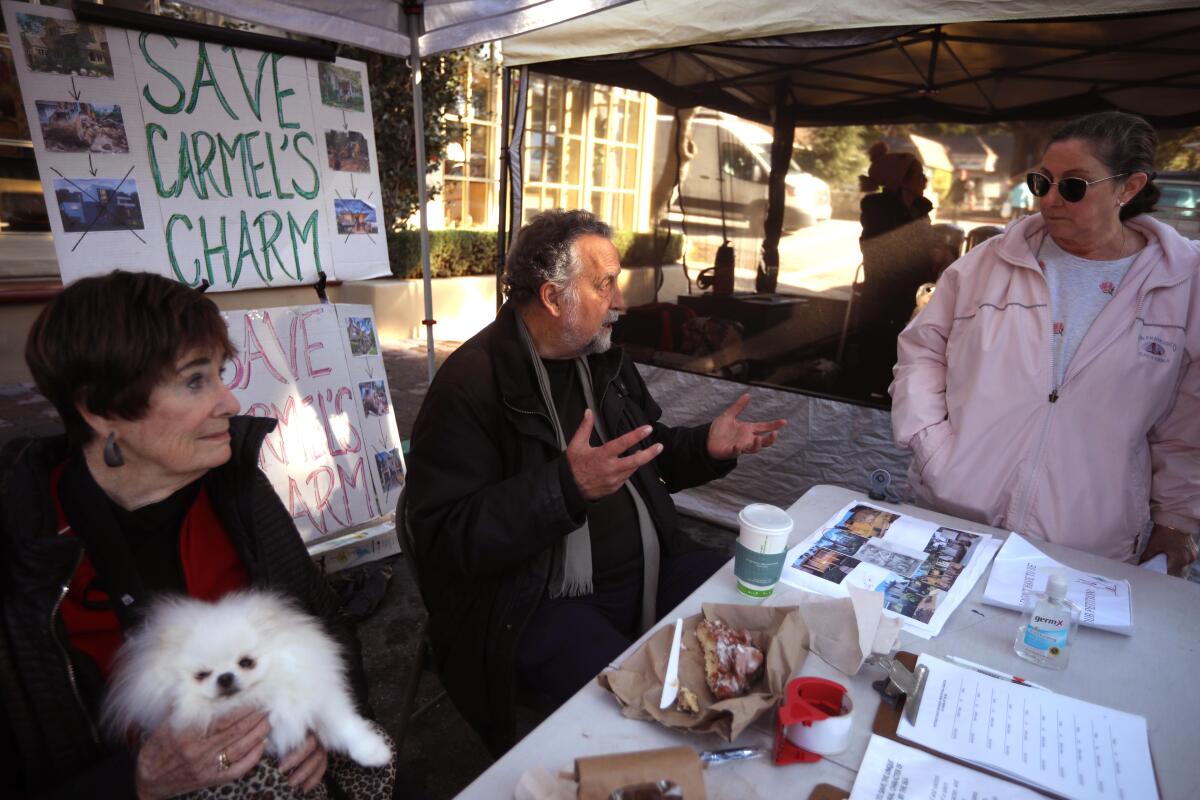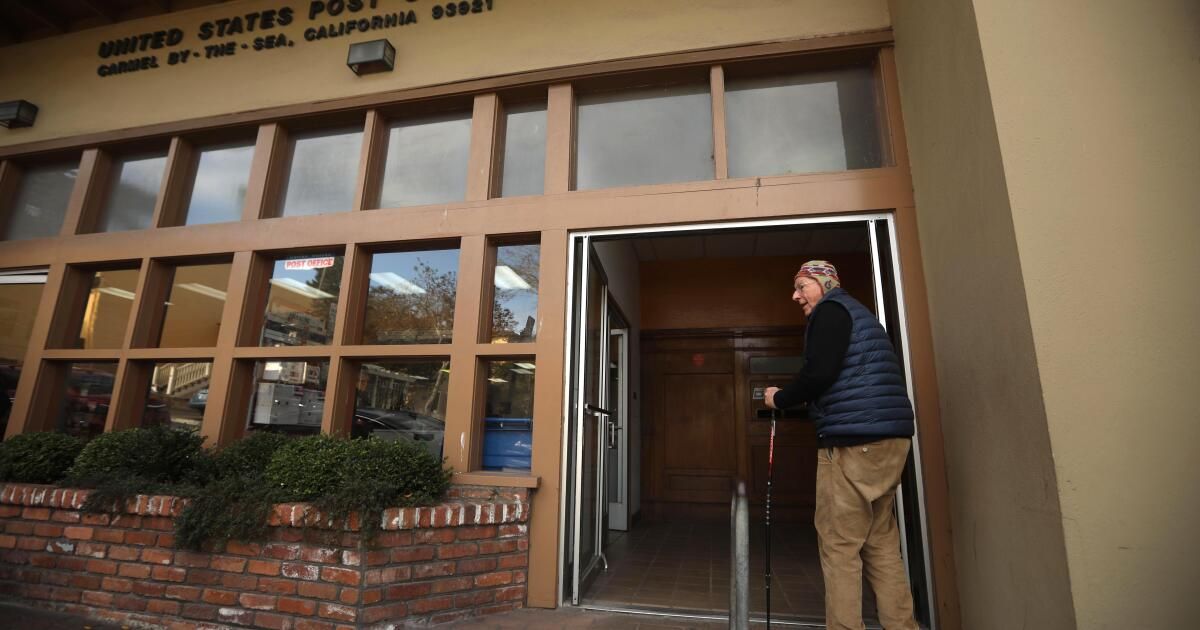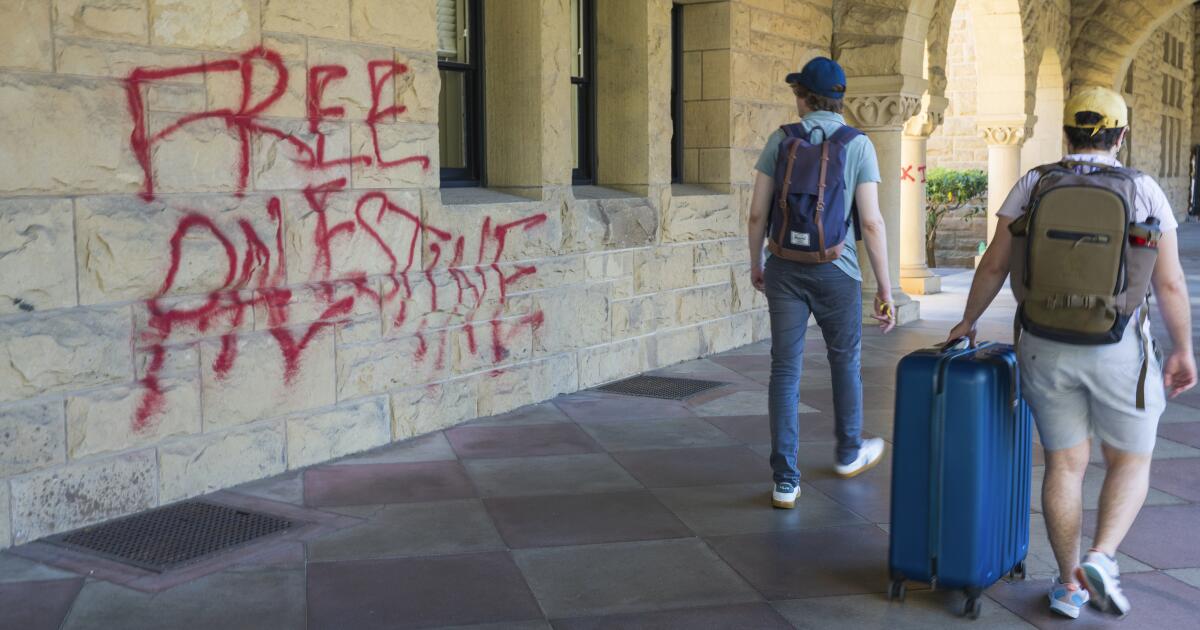After decades of resistance, Carmel-by-the-Sea is on the verge of… ADDRESS Some of the biggest frustrations of its residents.
Quite literal.
The wealthy little town, where homes and businesses don't have addresses, will soon have numbers assigned to its buildings, giving up a cherished local tradition after too many complaints about lost packages, trouble setting up utilities and bank accounts and other problems.
The Carmel-by-the-Sea City Council approved establishing street addresses in a 3-2 vote earlier this month, with proponents citing public safety concerns and the need to comply with the state fire code, which requires buildings to be numbered.
“Do we have to wait for someone to die to decide this is the right thing to do? It’s the law,” said Councilwoman Karen Ferlito, who voted in favor of the directions.
Instead of street numbers, residents of this town of 3,200 have long used directional descriptions: City Hall is on the east side of Monte Verde Street, between Ocean and 7th avenues, and they give their houses quirky names like Sea Castle, Somewhere and Faux Chateau.
There is no home mail delivery service. Locals pick up their packages at the downtown post office, where many say chance encounters with neighbors are an essential part of the small town's charm.
For more than 100 years, residents fought to keep it that way, once threatening to secede from California if addresses were imposed. They argued that the lack of house numbers, along with other quirks such as the absence of streetlights or sidewalks in residential areas, contributed to the much-vaunted “village character.”
“We are losing this place, day by day and week by week, to people who want to modernize us, who want to take us to a new level, when we want to stay where we are,” Neal Kruse, co-president of the Carmel Preservation Association, said during the July 9 City Council meeting where the directions were approved.
Carol Oaks stands in front of her house, which is called “Somewhere” and has no formal address. Carmel-by-the-Sea will soon number its homes and businesses.
(Genaro Molina / Los Angeles Times)
The debate over street numbers has been simmering for years and intensified during the COVID-19 pandemic, when people began shopping online more frequently and had difficulty receiving their packages.
Some residents and tourists worry that if they have an accident or a medical problem, emergency services will have a hard time finding them. Others have had trouble receiving prescriptions and medical equipment in the mail.
“This is a life-or-death situation for me and my family,” resident Deanna Dickman told City Council. “I want an address that people can find on GPS and get there, and my wife can get the medication she needs.”
Dickman said his wife needs a shot that arrives by mail and must be refrigerated. If it can’t be delivered, she has to travel to an infusion center and receive her medication every 30 days “so she can breathe,” Dickman said.
Dickman once had to have his own temperature-controlled medication thrown over a fence a block away. The property owner was not home and the medication spoiled.
Resident Susan Bjerre said she once needed oxygen delivered to her home for someone who had just left the hospital. The delivery driver couldn't find the residence, so he told her, “I'll be out on the street. I'll flag you down.”
“This is going to sound very sarcastic, but I think people who oppose instituting an address system don’t realize how inconsiderate they are being to other people,” Bjerre said.
Another speaker, Alice Cory, said she was concerned that implementing addresses in Carmel-by-the-Sea, long a haven for artists, writers and poets, “would just turn us into another town along the coast.”
In the one-square-mile town, “the police know where everyone is” and firefighters get to people quickly because there are so few streets, he said.
“Let’s leave it at that and keep the sweetness of this small town, because people know Carmel for a reason,” he said.

Neal Kruse, center, with Karyl Hall and their dog, Bubbles, chat with a resident at the Carmel Preservation Association booth at a farmers market. Kruse and Hall are concerned that street addresses will harm the town's character.
(Genaro Molina / Los Angeles Times)
Emily Garay, the city’s administrative analyst, told the council that while local officials may be familiar with Carmel-by-the-Sea’s unconventional boating practices, other emergency services, such as the California Department of Forestry and Fire Protection or Monterey County’s contracted ambulance provider, might have a hard time quickly determining where people live.
The California Fire Code requires buildings to have and display addresses, but Carmel-by-the-Sea has not enforced this provision.
“I believe that as a professional firefighter for over 37 years, [with] “We have a lot of experience in emergency response, so if the question is, ‘Is it more advantageous to have building numbers identified?’ Yes, absolutely,” Monterey Fire Department Chief Andrew Miller told the council.
Residents opposed to the street addresses have said they fear house numbering would lead to home delivery of mail, which in turn could lead to the closure of the Carmel-by-the-Sea post office.
In January, David Rupert, a spokesman for the U.S. Postal Service, told The Times that the post office had “been serving the local community since 1889” and that there were no plans to close it. (The lobby of the post office was red-tagged this spring after a septuagenarian crashed her red Tesla into the front windows.)
Garay said addresses will not trigger home delivery.
Before voting against the directions, Mayor Dave Potter said he was “concerned that we are losing the character of our community along the way” and that it had become the nature of the community to “fight over little things.”
But Ferlito said he had received “tons of emails from residents” who wanted directions and were worried about being found in a crisis.
“If we say that we will lose our originality because we have a direction, I think that is a false story,” he said. “This is more than originality. These are emergencies of life.”












